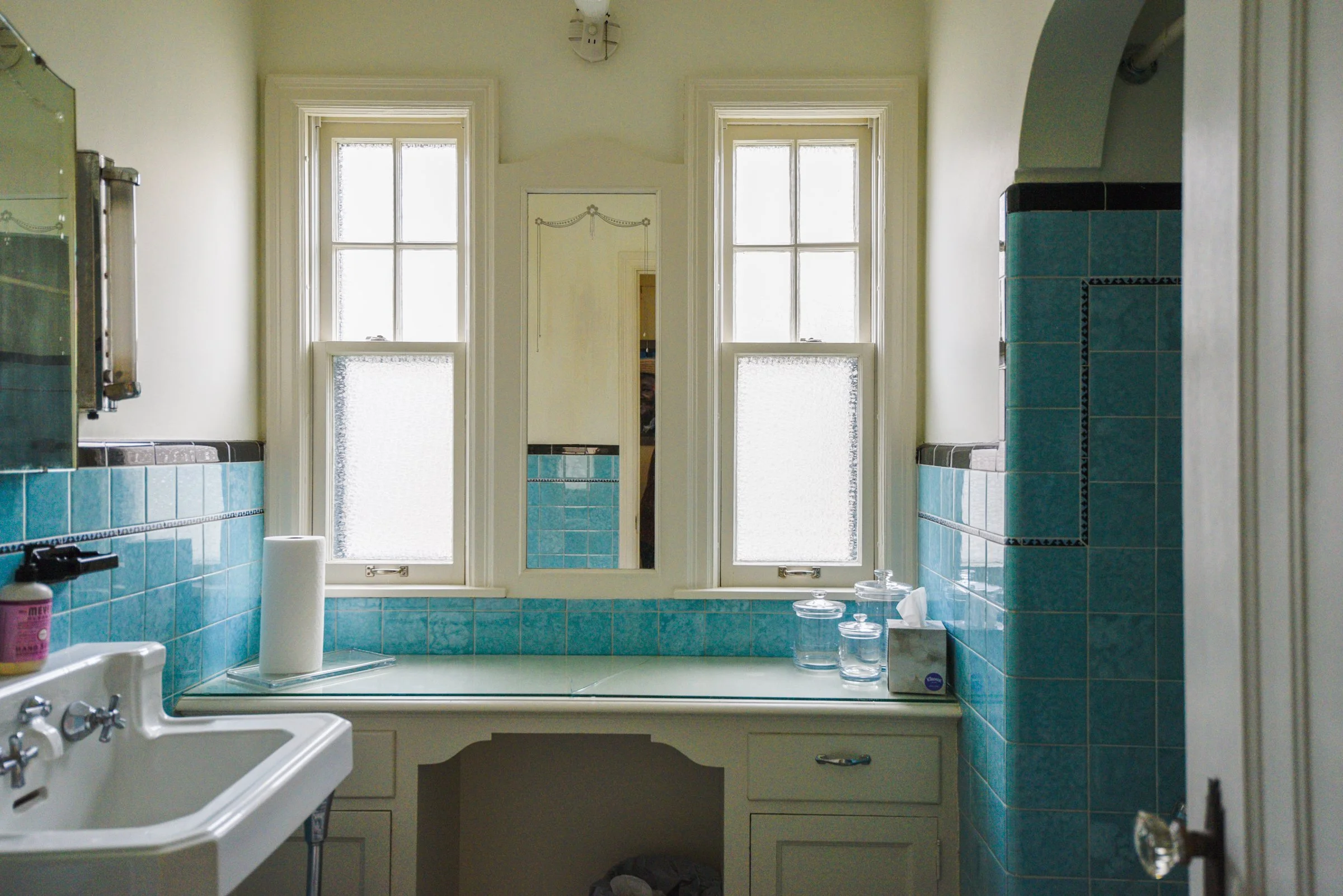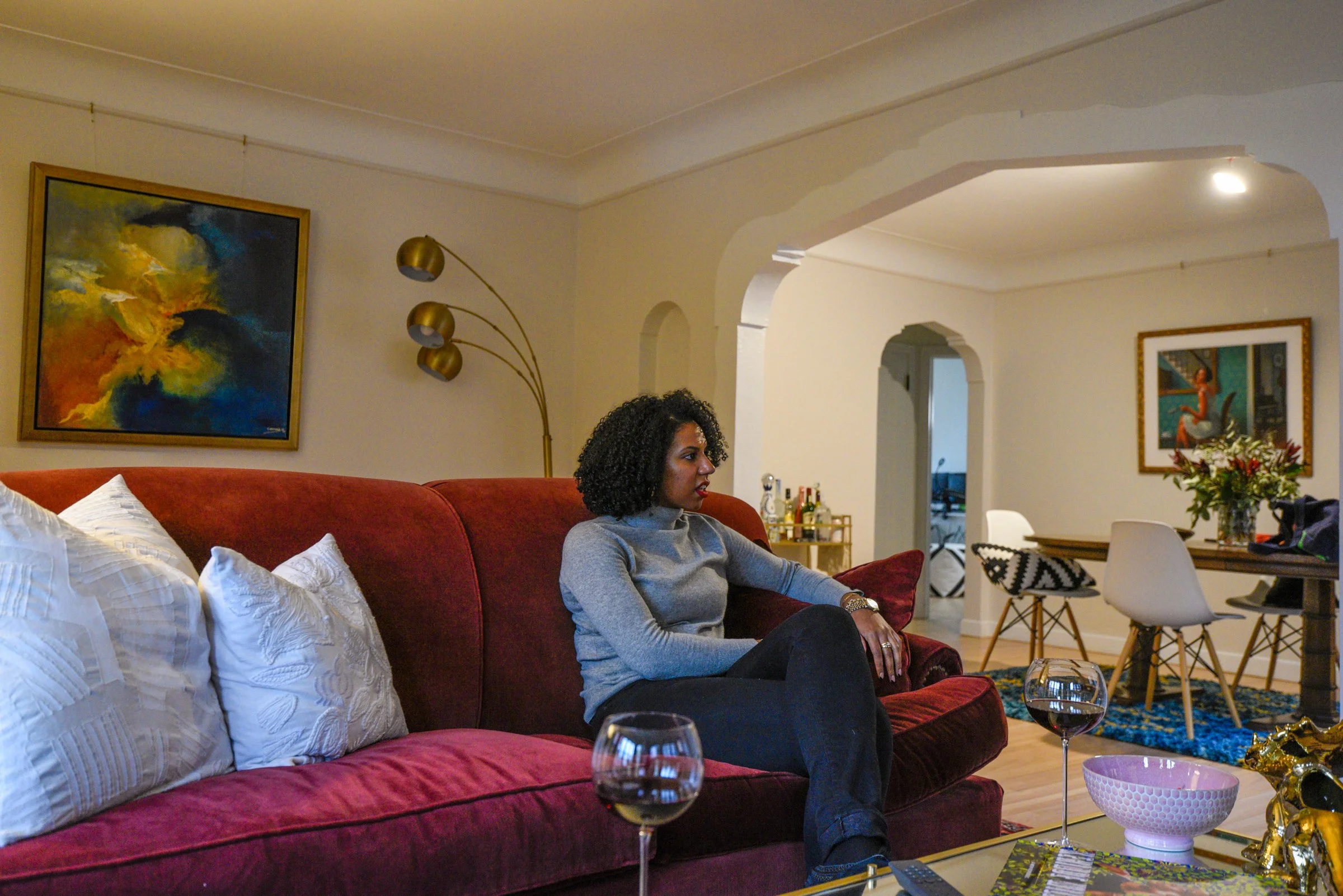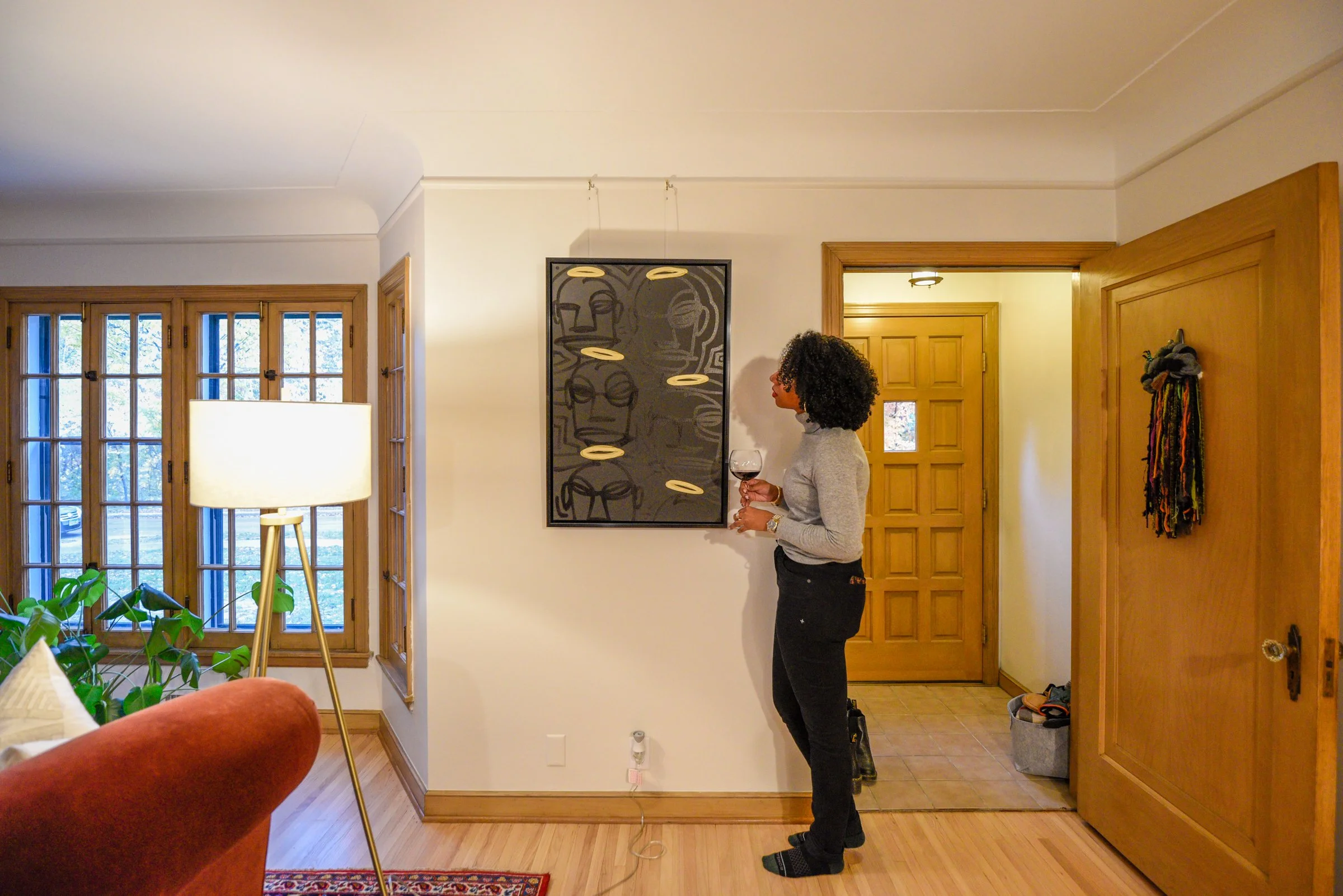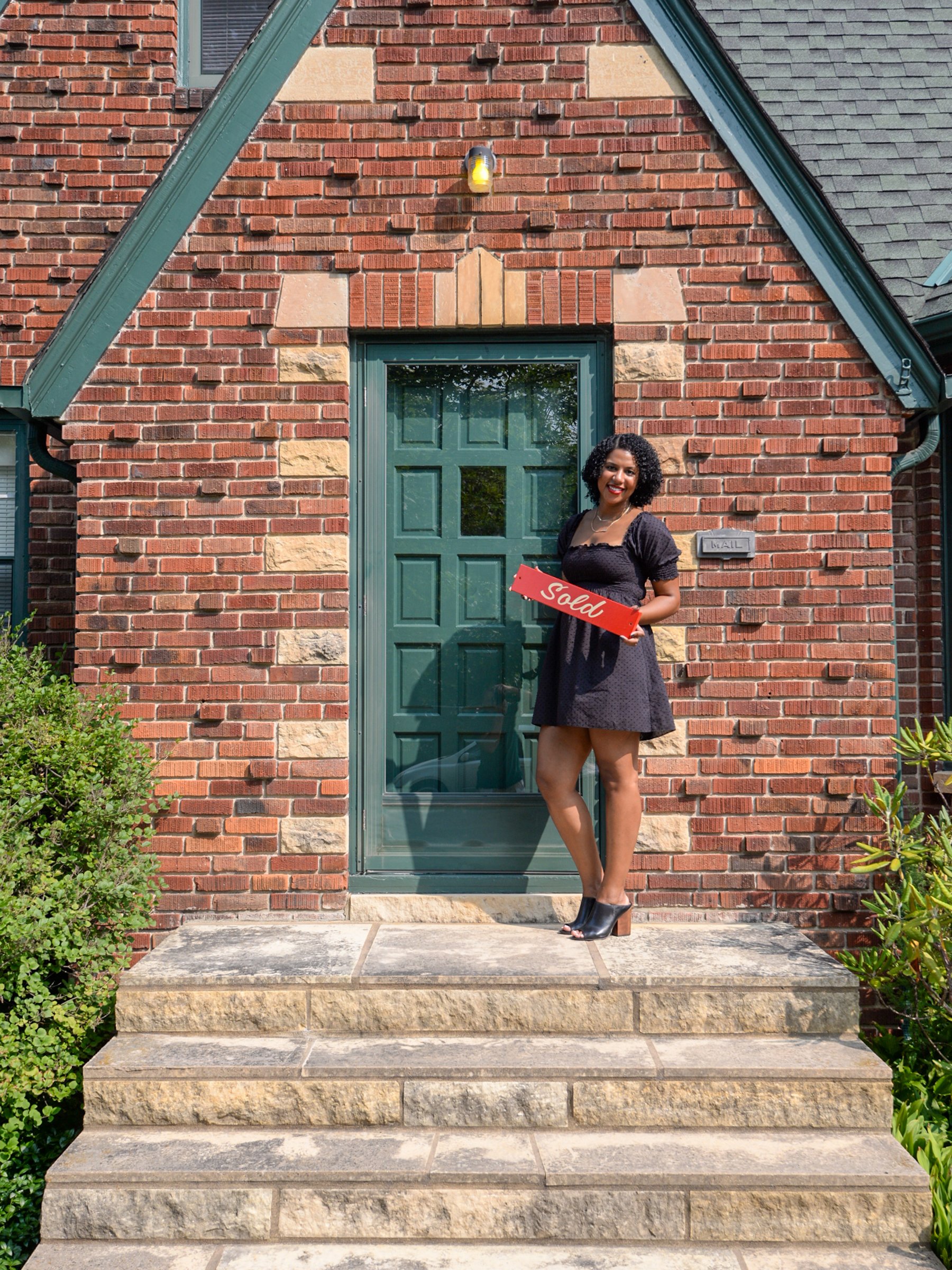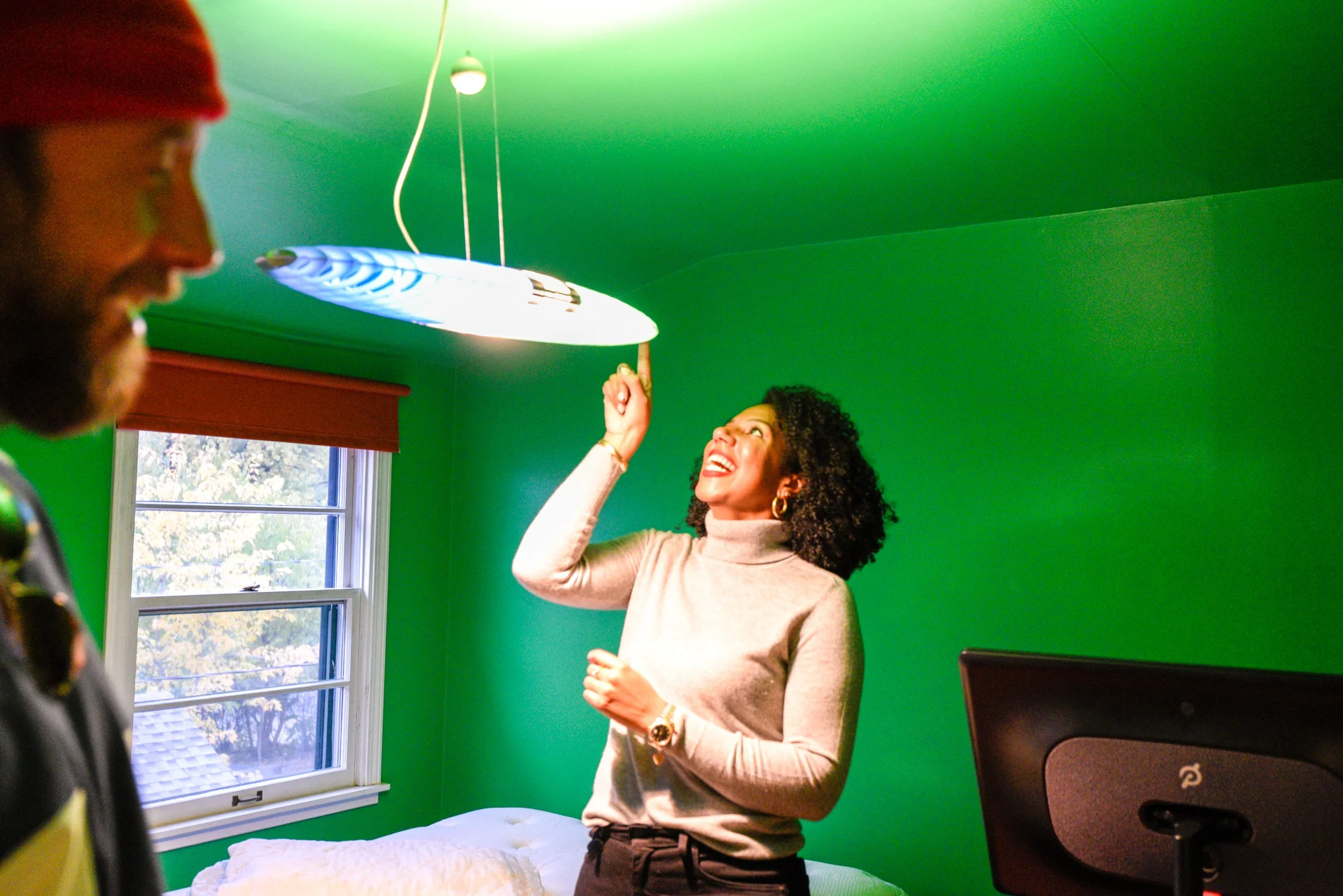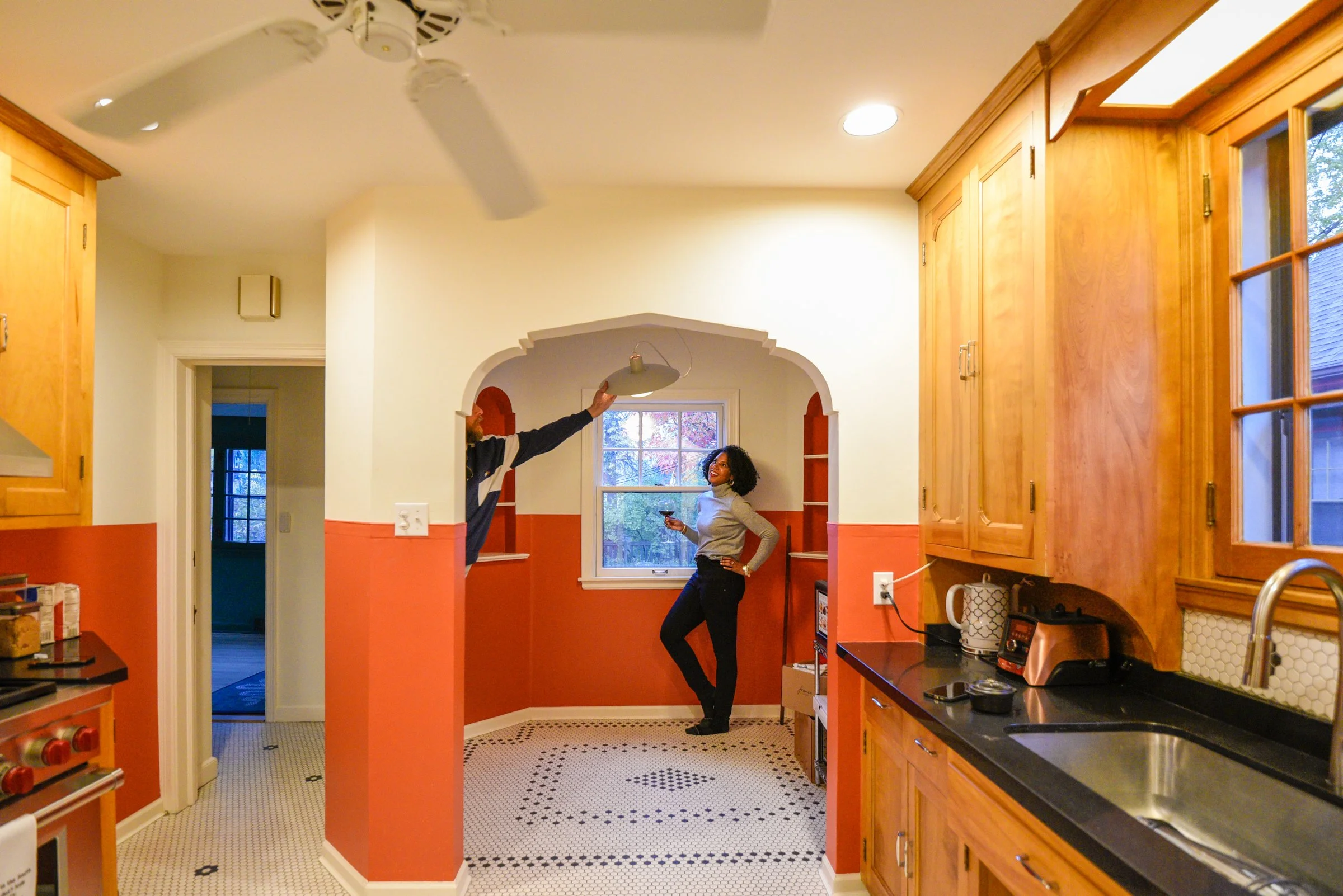Confessions of the Pragmatic First Time Buyer's Journey to Classic Home Glory
We sat down with Leslye in her south facing, creekshore brick-baron tudor to reflect on the lessons, growth and triumph of her Buying in Rare Form deep dive.
Her poise and trust resulted in a deed signing of the best pound-per-pound tudor purchased since the onset of the Covid real estate tsunami. Leslye saw the immense upside while the rest of the marketplace focused on her structure’s lapses, which will be task managed into the modern era in the first 24 months of ownership.
Leslye sought out RFP to fully immerse herself in the finest example of classic architecture that she could afford. (Aided greatly by Paris’ guided financial planning) Prior to beginning actual touring of structures, she had mentally telegraphed herself into a post-Victorian storybook Arts & Crafts era bungalow. In the beginning, she was viscerally opposed to the examples from the post war tudor era.
Q: Talk about how your search began with an absolute craftsman focus, and it ended with a post-war tudor ?
A: Steve and Georgi are going to challenge your thinking. Quite often they presented eras of homes in locations I wasn’t open to, and those examples led me to a greater understanding, be willing to listen to their advice. It wasn’t disclosed to me early on, but Steve was incepting the tudor style into my heart from the beginning despite my reluctance. I didn’t realize it until the end, but allowing the trust in guidance with the journey, they were leading me to a storybook tudor all along.The average stock we toured was just preparing me for the real show.
Competing for a classic home in the peak of south Minneapolis is a major challenge. The level of excellence was established the first time I met Steve & Georgi : “how many houses are you going to own in your life Les, this isn’t the one.” Whenever I wasn’t sure, Steve chirped me with that and we laughed on the curb until next time!
The search was an absolute roller-coaster and there were times that you might want to give up and go back to renting. Just remember, the classic home that needs your attention will be yours when your moment comes. It will be worth it in the end, but you are going to have to put a lot of trust in Rare Form’s process, for which you will be rewarded.
Ms. Suarez grew up like many of us, in the cul-de-sac laden world of 80-90s suburbia. She was raised in a tight knit family that placed a value on casual and frequent gatherings at their home.
Q: What cultural references in your upbringing made you determined to own a classic home, while growing up in suburbia?
A: My parents always said you are a guest in their home exactly one time. After that, you should come in and feel like you’re at home; whether that means going to the fridge or pantry for food or pouring yourself a drink. And they wanted to make sure the flow of their home allowed for that kind of entertaining…gathering if you will.
Suarez realized in her youth and post college years that the physical attributes of a space played a major role in the social bonding that occurred, the open door tone set by her parents was a benchmark that she too wanted to establish at the onset of securing her first home.
“Rooms that flow together, but are still defined spaces, hardwood floors, lots of cabinet and counter space…they wanted to make sure ample space for gathering & be resilient in the face of constant usage by many friends and family members. Details that were as functional as they are beautiful. In some cases, details that you don’t find in new construction today.”
That’s what drew me to classic architecture: Classic homes have details that speak to how people lived and entertained. They used materials that are meant to stand the test of time and outlive each owner for generations beyond their golden years. Sure, they have quirks, especially with age, but when you look around a classic home and see hardwood floors or built-ins that are 90-100 years old, there’s a protectiveness to continue to preserve it & ensure it’s historic intentions remain rather than being deleted for something trendy. Classic homes were meant to be lived-in and shared with those you hold close to you. That’s how my parents brought my sisters and I up & how they treat their home, & that’s what I looked for and now plan to do with mine.
In addition, Suarez was raised to appreciate contemporary art which is directly correlated to architectural appreciation.
For their college graduation, every Suarez was gifted a piece of modern art from a list of artists that the parents support, despite only residing in her tudor for a couple weeks following the work our trades completed, Leslye immediately hung her outstanding & personal reflective examples of inspiring artwork, which really punctuates the clean lines of her brick barons interior.
Q: What is the biggest piece of advice for the nerved first time buyer as they begin their classic home search?
A: Look at a variety of different home styles; even if you think you “know” it’s not your style or that you just flat out hate it. I refused to look at Tudors, & actually hated them (center fireplace, textured walls, archways) and Steve insisted from the onset that I would love them (based on the working experience rooted in restoration and preservation, RFP knew how well-built the era was, offering true insider information on the structural variations of eras of architecture).
Following our first tour Steve was most enthusiastic about tudor ownership being the right fit for me, especially after meeting my dad who was overseeing the process with loving dad energy. (Larry has been a 30 year PCA carrera owner, he is a steward of his early 80s coupe, and spoke candidly about his daughter acquiring a home was was properly ‘sorted’- a term used often in the vintage Porsche community referring to the level of detail and depth of documented maintenance)
When Leslye or any first time buyer rejects a style of architecture for perceived aesthetic reasons, it typically sets their fate in stone, like many before her, the merits of the deco era became prominent in the growth of home touring, when we entered 1930, she had built enough knowledge to truly grasp how special this long term estate was, defying the marketplace and securing on the finest examples of 2021.
Q: All three major criteria of buying were altered in your search; (style, budget, and location) from beginning to end, talk about the growth and what was learned there?
A: Be open to neighborhoods that are outside of your initial target neighborhood. At different points, Steve & Georgi both showed me houses outside my target area and explained why they wanted me to look in different neighborhoods.
They encouraged me to explore the new area and spend real time immersing myself in the varying communities. What I found was new shops and restaurants, walking trails…I found a community I wanted to be a part of and now I am.
Q: Your budget increased by nearly a 1/4 from beginning to deed signing…
A: Understand what you want in a home (your nice-to-haves) vs what you need in a home (your non-negotiables) and understand what that is going to cost you, especially in the current market which is heavily contested. I thought I knew the market and what my buying power could afford me, but once I actually started looking, that was a very different story. My wants & needs weren’t matching up with my budget, so I had to reevaluate everything. In the end, I had to take a mental journey, a meditation of sorts; allowing me to come to terms with what I truly needed , & adjusting the budget with Paris to achieve the vision of the space I wanted to flourish in.
Leslye’s budget increase was known early on, as her eye for originality & raw appreciation for scarce detail, it was evident that she was ready for a truly special intact example of early architecture that warranted a mindful operator as her captain from 2021 onward.
Q: As a highly functioning corporate operator, talk about how you were able to digest the long list of updates that allowed you to land 1930, while the lesser educated market passed on the opportunity?
A: Old houses are going to have quirks & there is always going to be a long list of maintenance and conscious updates to prioritize, especially when your house is nearing 100 years old and that’s just going to come with the territory. Be willing to work with your home, not against it. Make improvements that give you some modern-day comforts or finishing touches but don’t lose the overall character of the home. Afterall, that’s part of what you were looking for when searched for a classic home.
Q: We don’t spend enough time commending true advantage purveyors have with the fiscal planning acumen of Paris Alves, talk about the financial side of your purchase.
A: Take time to get a good mortgage broker! One that walks through all the meaningful financials of the investment with you. You need more than just the down payment & it’s hard to understand what that really is until you talk to a professional that has reviewed your situation.
Again, this is what they do for a living so ask them questions if you don’t understand something. Paris allowed me to interview him in the beginning (to make sure it was a good fit) and then reviewed a number of fee sheets with me so I would understand all the costs associated with buying a home and how that impacted my mortgage payment. This knowledge allowed me to look at homes and estimate what my payment would be (I could also send him addresses & got quick response on what my cash to close would be. Knowledge is power and if you don’t have a mortgage agent who is willing to educate you, find a new one.


